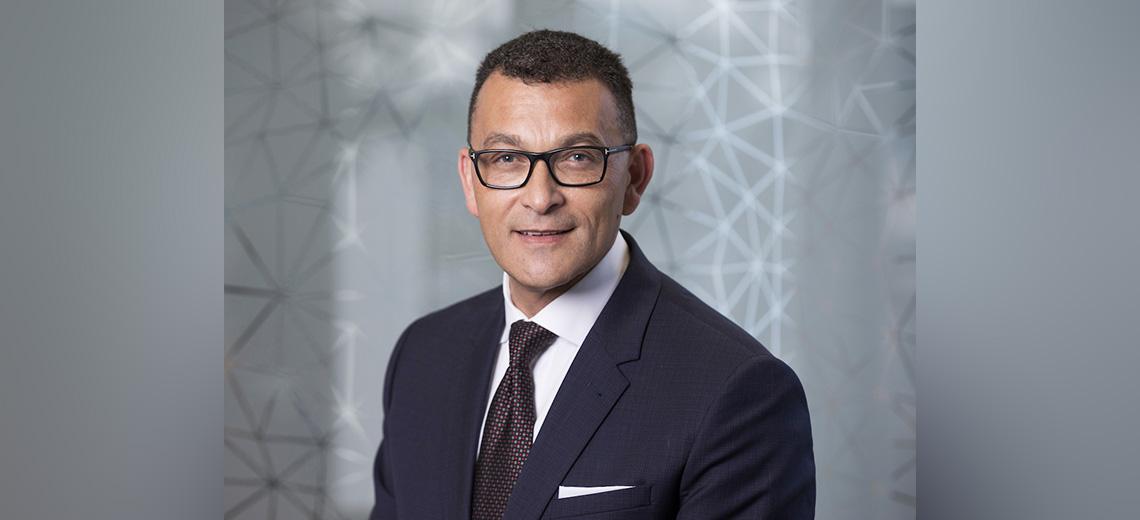
5 minute read
Hisham El-Ansary is Chief Executive Officer of Bupa Asia Pacific, a leading health and care company that serves more than six million customers and employs 22,000 people in the region. He is also a member of Bupa’s global executive team.
Hisham has worked extensively in management and executive roles with Bupa. He established and led Bupa Health Services – a business providing clinical services in dental, optical, health coaching and medical-assessments – initially as Managing Director then as Chief Executive Officer. Hisham subsequently stepped into the role of Chief Executive Officer for Australia and New Zealand. Prior to joining Bupa, he was the Chief Financial Officer of department store Myer.
Over the past 30 years, Hisham has held senior executive roles in a variety of industries including health, retail, energy, aviation and construction. He completed a Bachelor of Economics at the ANU College of Business and Economics in 1987 and later a Master of Business Administration from the University of Canberra in 1991.
In this interview, Hisham discusses business practices that promote positive work culture, the evolution of healthcare trends, and how to strike a work-life balance that empowers you to be a strong leader.
Q. Can you tell us about your career path and what led you to the role you're in today?
When I finished year 12 – and while I waited to start my Bachelor degree in Economics at ANU – I was fortunate to be offered a permanent role as a base-grade clerk at the Department of Finance. As the academic year started, I decided to change my enrolment to part-time and for the next five years worked and studied concurrently – moving around different organisations and jobs. It was a great experience, which certainly accelerated my understanding of the balance between theory and practice and what makes organisations work.
Q. You have held senior roles in a variety of industries, including retail, energy, aviation and construction. Can you tell us about the key similarities in business practices that are essential to successful management and workplace operations across industries in Asia Pacific region?
Each industry has its own peculiar business model and language, but there are definitely more similarities than differences. These largely relate to being clear about your strategy – what it is that sets you apart from your competitors. Then it’s about how you unite all the parts of your organisation to drive towards effective execution of your strategy. Finally, building the right team and creating the right environment or culture with them – to enable them to be the best version of themselves. That, for me, is the common denominator!
Q. What routines do you practice regularly, or principles do you follow, to help you best perform your role as Chief Executive Officer?
Time is often the most valuable commodity for a CEO, and very much so in a global organisation like Bupa when meetings start early and run well into most week nights. I’m fortunate to be surrounded by a great team who help keep distractions at bay, enabling me to focus on the things that matter. It’s also good to embed some non-negotiables; we try to keep Fridays ‘meeting light’ for example, so we can focus on strategy and the future, away from the myriad of tactical issues that can consume your day. It’s also important to get some exercise so I try to take Sasha, our German Shepard, on a long walk most days. I try to avoid working from Friday night through to Sunday night and will go out with family and friends or get my hands dirty in the garden, and play the occasional round of social tennis – it’s important to recharge and restore equilibrium to your mind and body.
Q. You established and led Bupa Health Services (Asia Pacific), which provides clinical services in dental, optical, health coaching and medical-assessment services. What is your main advice to those considering or undertaking large-scale healthcare projects?
When approaching change, having a clear and well-understood strategy is important, but what really matters is being able to deliver on it. My rule of thumb is that strategy is two thirds execution, so moving at pace to communicate the future state, getting some runs on the board and building a ‘coalition of the willing’ enables you to make it real and create forward momentum. By definition, new initiatives run up against the prevailing tide; having a good dose of tenacity in the face of the inevitable obstacles will be important.
Q. In your view, where is the global healthcare sector trending over the next decade?
We have made huge progress in recent years in understanding our health and the associated treatment options. At a system level, however, we have generally been much slower at ensuring our health system is adapting to the evolving needs of us as consumers. This is changing though, as several mega trends emerge, accelerated by our experience with COVID-19. Foremost among these is the growing empowerment of the consumer. Increasingly, consumers are better informed and want to play a greater role in managing the choices around their own health. This is being fuelled by increased innovation in health technologies with the growth in wearables, remote diagnostics, genomics and artificial intelligence enabling more sophisticated real-time monitoring and access to information. With the increasing prevalence of chronic disease, there is now a much greater need for integration in health data and health care delivery. Together, these trends will progressively reorient the health system away from the provider towards the consumer, ensuring they are active partners in achieving and maintaining better health outcomes.
The ANU College of Business and Economics offers an extensive range of specialised programs. Click here for more details.
